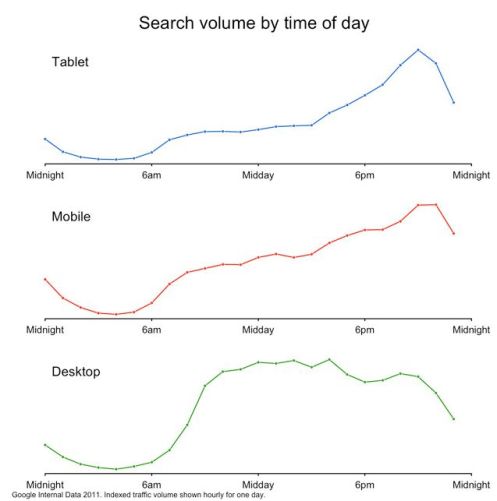Here is an interesting Infographic on the Moble Market. Full article at Mashable http://mashable.com/2011/03/23/mobile-by-the-numbers-infogrpahic/
This is a great podcast series from The Commonwealth Club of SF.
Part 1
Tutorials from the Trenches
Part 2
The Nuts and Bolts of Making Books
Part 3
Book Sales and Marketing
You should, NFC it will have a big impact on your buying behavior soon. Read this post from Mashable http://on.mash.to/rnjYdg
Here is an extensive list of Social Media Monitoring Tools with links. From Ken Burbary http://wiki.kenburbary.com/ and many more
and many more
1) How will Amazon handle customer data and revenue sharing?
2) Can publishers subsidize the purchase of this device for subscribers?
3) Is this another app-development headache?
4) Can Amazon give a boost to paid content?
5) Will it grow the tablet audience?
Read full post from Poynter at http://goo.gl/0WWUy
Uses of web devices vary by time of day. Here is when the different devices are most active. http://goo.gl/VXkJs From AdAge Blogs
By forcing magazine publishers to use the iPad like a newsstand rather than a subscription vehicle Apple forces publishers to charge high prices per copy. This is good for Apple but not so good for publishers. Below is a link to an interesting NY Times piece looking at this issue.
From the NY TIMES – Apple may offer new opportunities with its devices, but it exacts a heavy toll. Magazine publishers argue in particular that limiting magazine sales on the iPad to single issues (except in a handful of cases) has hamstrung publishers from fully capitalizing on a new and lucrative business model.
http://www.nytimes.com/2011/01/17/business/media/17apple.html
Here is an interesting piece on working around Apple for iPad content- From MediaShift. Full post here http://www.pbs.org/mediashift/2011/08/publishers-doing-an-apple-end-run-to-deliver-to-ipad236.html
Quoting from the article–
Instead of building native apps in iOS, the proprietary operating system for the iPad and other Apple devices, the publishers are using HTML5, the latest version of the open-source HTMLlanguage used to build web pages.
By going outside the App Store, the publishers achieve a number of aims. For one, they keep all the revenue for themselves.
They can control the display and marketing of their publications, rather than relying on the App Store’s decisions about what will be surfaced and how apps are categorized.
They also can use their own fulfillment systems and databases. The Financial Times, for example, can seamlessly give a subscriber access to content paid for in another platform and avoid any restrictions Apple might place.
Publishers can price and bundle content however they want, as well. Until recently, Apple refused to allow apps from a publisher that sold the same content anywhere else for a cheaper price.
And publishers can sell whatever they want from within the app.
Here is an interesting Infographic comparing Facebook to Twitter from Digital Buzz.
From the study:
It’s interesting to note that 67% of people on Twitter follow a brand (that they will purchase) in comparison to only 51% on Facebook, yet on Facebook 40% of all people follow a brand in comparison to Twitter’s 25%.
See the Infographic here http://www.digitalbuzzblog.com/infographic-facebook-vs-twitter-demographics-2010-2011/
New research by Bit.ly, the URL service indicates that a link receives at least half of its total clicks within a few hours of being posted on Social Media. The half life varies a bit by specific service with YouTube links delivering activity longer.
Quoting the study:
“In general, the half life of a bitly link is about 3 hours, unless you publish your links on youtube, where you can expect about 7 hours worth of attention. Many links last a lot less than 2 hours; other more sticky links last longer than 11 hours over all the referrers. This leads us to believe that the lifespan of your link is connected more to what content it points to than on where you post it: on the social web it’s all about what you share, not where you share it!”
See the report here. http://goo.gl/iCAol





